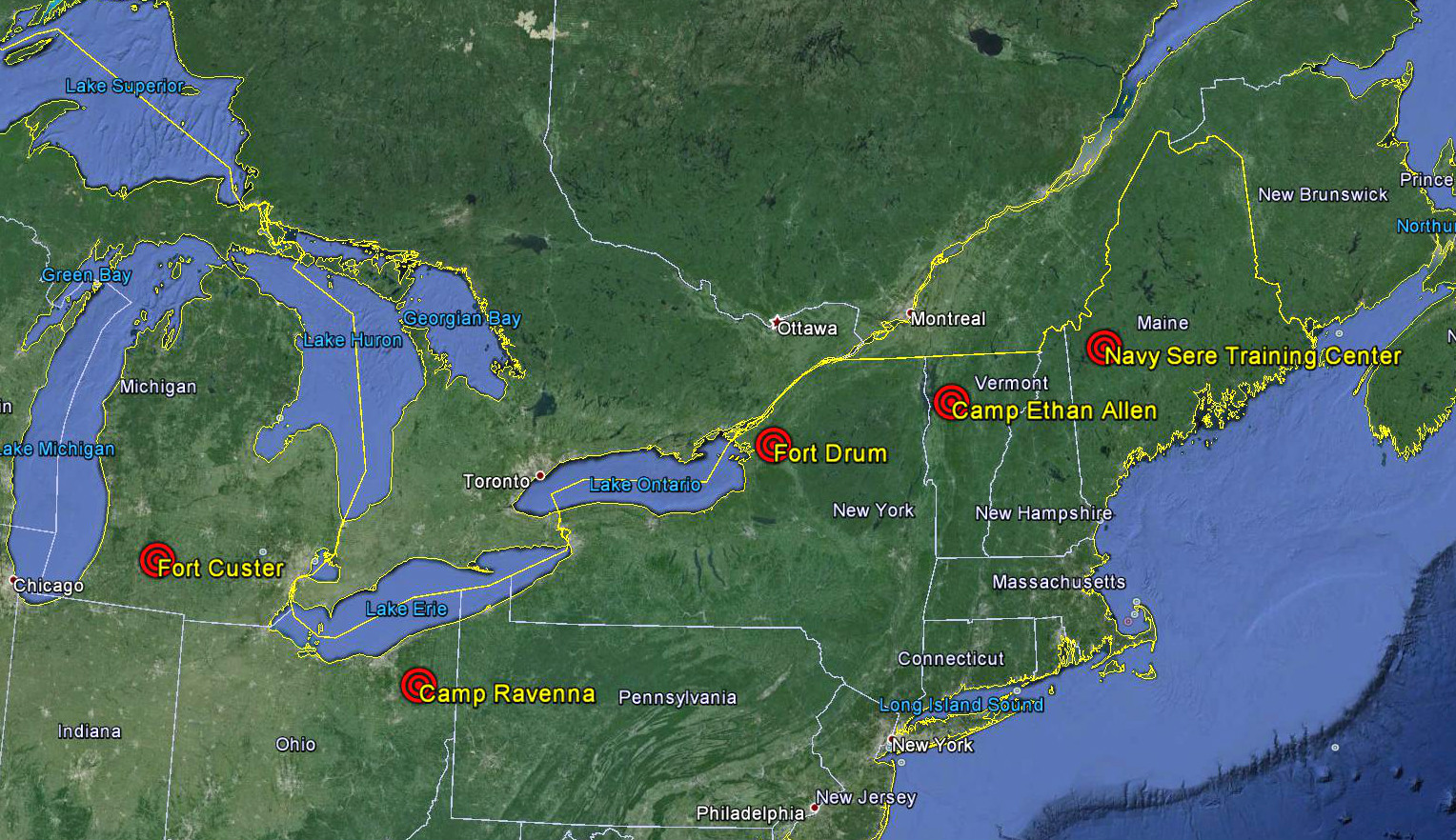In 2012, Congress demanded the Pentagon come up with recommendations for the location of a third site to base interceptors for the U.S. Ground Based Midcourse (GMD) missile defense system. So far no money has been appropriated for building a site (nor even for the next step in the study, an Environmental Impact Assessment of the top three candidates), nor has the Pentagon asked for any.
But last Friday, the Pentagon announced the locations of five candidate sites for a possible future deployment of additional GMD interceptors. They are:
- Fort Drum, NY
- Camp Ethan Allen Training Site, Vermont
- Naval Air Station Portsmouth SERE Training Area, Maine
- Camp Ravenna Joint Training Center, Ohio
- Fort Custer Training Center, Michigan
To build a new site sometime in the next few years, the Pentagon would have to use the same interceptor technology currently fielded at the GMD’s two sites, one in Alaska and the other in California. But the testing record for the current system has been poor.
Indeed, the system has failed to shoot down test missiles in eight of 16 attempts since 1999, even though operators were given significant information, including the time and place, about the “attack” ahead of time. And its testing track record has not improved over time. The $214 million intercept test in July, the most recent attempt, was the third failure in a row. The system has not had a successful test since 2008.
So the system has not demonstrated that the interceptors could perform effectively against even a simple threat such as a small raid size without accompanying countermeasures.
One of the primary reasons proponents give for an additional GMD site is to increase the amount of time that the system can engage the enemy missiles—the “battlespace”—compared to engagements from the Alaska site, so that the US can take a shot, look to see if the incoming missile were hit, and then shoot again if it wasn’t.
That capability might be useful if the threat were really just the simple threat. But keep in mind that shoot-look-shoot wouldn’t make the GMD more effective than the current strategy of shoot-shoot-shoot-shoot. It could simply make it more efficient in that the U.S. might be able to use fewer interceptors against each target. This requires both that the U.S. has sensors in place for the “look” part of the strategy and sufficient confidence in the interceptors to want to conserve them rather than launch them all. Right now, the targeting strategy is something like four interceptors per target and no “looking” in between shots; the planned inventory of 44 interceptors is then sized for a raid of 11 simple targets. A shoot-look-shoot strategy that allowed the strategy to scale to 2-on-1 targeting in theory would let the 44 be used against 22 targets.
However, this strategy to improve efficiency doesn’t buy you anything under the conditions that are much more likely: any country that can build an ICBM can also build decoys or other countermeasures that make it impossible for the defense to distinguish which threats are real and which are fake, even with a “look”ing sensor. In that case, there will be many more targets than the interceptor inventory could handle and the defense would be defeated.
At an estimated cost of $3.6 billion to build and operate a new site over the first five years, investing in a third interceptor site to gain a marginal advantage in efficiency against yesterday’s simple threat is not strategic thinking. Note that the Director of the Missile Defense Agency stated that there are more cost-effective alternatives to strengthen the U.S. missile defense system, including improving the system’s sensors, that could be deployed much more quickly than building a new site.
Putting ineffective interceptors more places doesn’t help. Unless the Pentagon solves the countermeasure issue, a new site would not increase the capability of the current GMD system, and would waste billions of dollars.
Correction 10/10/13: The location of the Maine site is in the western part of the state, not near Portsmouth, NH as we originally believed.
The Naval Air Station Portsmouth Survival, Evasion, Resistance, and Escape (SERE) Training Area is at Portsmouth Naval Shipyard, Kittery, ME, but the remote training takes place at the Navy Remote Training Site, near Rangeley, ME. The 12,000 acres of DOD-owned land out there is the proposed site. Which makes a lot more sense.
The map above has been corrected.

